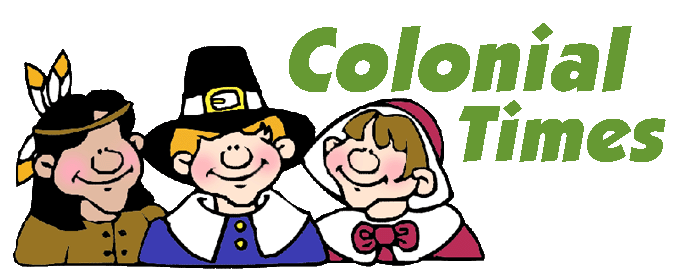
The 13 Colonies for Kids, Life in Colonial Times
For Kids
In the 1600s, back in England, there were several bad harvest years in a row. Farmers especially were hit hard by this. Not only could they not sell their crops to others, they could barely feed their own families. Many farmers were considering leaving England and immigrating to the New World. What held them back for a while was a propaganda campaign. The leaders in England did not want to lose their farmers and craftsmen. To slow immigration down, it was soon put about that the people who were immigrating to the New World were criminals and people running away from debt and responsibilities. There was some truth in this. But not much.
Most of the people who immigrated to the New World were people of courage who wanted a better life for themselves and their families. Shopkeepers, artisans, craftsmen, weavers, tailors, shoemakers, blacksmiths, bakers, and many farmers headed to the New World on ships. Some paid for their passage by promising to send goods back to England. Some paid for their passage by promising to work for others for several years to work off their debt.
Along with their beliefs, they brought as many of their personal and professional goods as they could afford to carry with them. Because they were traveling by ship, space was limited. Sea voyages could be dangerous. There were pirates at sea. The weather could turn bad. Ships got lost. It took courage to board ships headed for the New World. It took planning. It took many promises.
In spite of their best efforts to be prepared, not all of the first colonies were successful, but people kept coming. The New World, that today we call America, soon had settlers along the entire east coast.
The colonists did not meet and decide to have three regions, each with its own way of doing things, but that it how it worked out. The regions were the New England Colonies, the Middle Colonies, and the Southern Colonies. The colonies in all three regions established laws and customs that mimicked customs in their prior homeland. But life was not the same. The New World offered new challenges. People had to work hard to find a better and new way of life. They had to learn how to get along. Sometimes that seemed, well, impossible.
What did they bring with them?
The 13 colonies were not built in a day. It took some time.
The First Colonies
Things get organized:
People:
Daily Life and Religion:
Government and Trade
The Woodland Indians
13 Colonies - Free Online Interactive Games & Activities
For Teachers
13 Colonies - Free Use Presentations in PowerPoint Format
13 Colonies - Free Use Lesson Plans and Classroom Activities for Teachers
What came next?
The Road to Revolution (No taxation without representation)

Explore American History
For Kids and Teachers
Creating a New Nation
- New World Explorers
- Native Americans in Olden Times
- The 13 Colonies
- Road to Revolution
- The American Revolution
Creating a New Government
Western Expansion
- Jefferson and theNew Republic
- Louisiana Purchase
- Lewis & Clark
- War of 1812
- Monroe Doctrine
- Manifest Destiny
- The Oregon Trail
- Wagon Trains
- Pioneer Life & Frontier Life
- Trail of Tears
- The Alamo 1836, Texas Revolution
- Mexican - American War 1846-1848
- Gold Rush
Brink of the Storm and the Civil War
- Events Leading up to the American Civil War
- The Industrial Revolution
- American Civil War - 1861-1865
- People of the Civil War - Lincoln, Davis, Grant, Lee, Frederick Douglass, Harriet Tubman, Dred Scott and more
- 13th Amendment ending slavery forever
- Reconstruction, Carpetbaggers & Scalawags
- 14th & 15th Amendments
Growth in the West
The Nation Grows
World War I, The Great War
The Roaring 20s
The Great Depression
World War II
Slavery in America
Segregation for Kids - Civil Rights
US Holidays
QUIZZES - Interactive, with Answers for Student Review
For Teachers
Free for Classroom Use - American History Powerpoints and Presentations
American History Lesson Plans, Units, Activities, Projects for Teachers